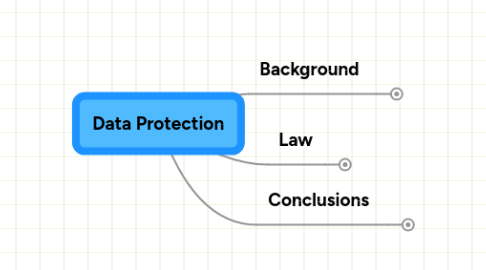
1. Background
1.1. What's is about?
1.1.1. Personal data
1.1.2. Standards for handling that data
1.1.3. How to meeting those standards
1.2. Where did it come from?
1.2.1. Euro Convention on Human Rights in 1950s
1.2.2. Concerns about restricting trade within Europe
1.2.3. Reflection of importance of Euro issues
1.2.3.1. Untitled
1.2.3.1.1. Free movement
1.2.3.1.2. Free trade
1.2.4. Early UK developments
1.2.4.1. Untitled
1.2.4.1.1. Sex Discrimination Act 1971
1.2.4.1.2. Race Relations Act 1968
1.2.4.1.3. Younger Report 1972
1.2.4.1.4. White Papers
1.2.4.1.5. Lindop Report 1978
1.2.5. Early international developments
1.2.5.1. Untitled
1.2.5.1.1. OECD guidelines in 1980
1.2.5.1.2. Council of Europe Treaty in 1981
1.3. The UK Laws
1.3.1. Data Protection Act 1984
1.3.2. Data Protection Act 1998
1.3.2.1. Untitled
1.3.2.1.1. Data Protection Directive 95/46/EC
1.3.3. Human Rights Act 1998
2. Law
2.1. Statutes
2.1.1. Untitled
2.1.1.1. Key concepts
2.1.1.1.1. Personal data
2.1.1.1.2. Processing
2.1.1.1.3. Data Protection Principles
2.1.1.1.4. Notification
2.1.1.1.5. Data Subject
2.1.1.1.6. Data Controllers
2.1.1.1.7. Data Processors
2.1.1.1.8. Jurisdiction
2.1.1.2. Risks
2.1.1.2.1. Untitled
